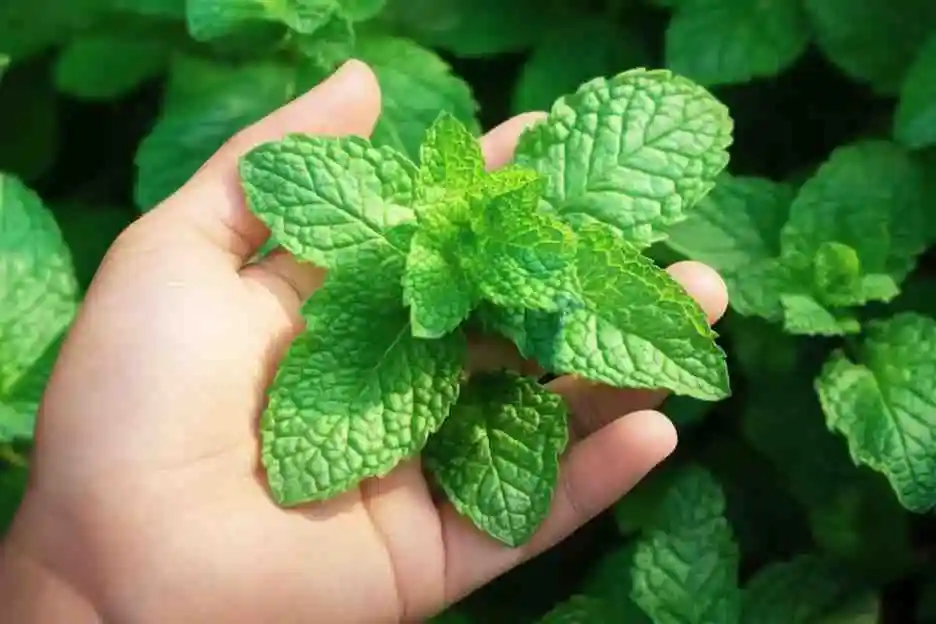Growing fresh mint at home is an easy and rewarding experience. Not only does it provide you with a versatile herb, but mint can also be used in various dishes, drinks, and even herbal remedies. Additionally, it has pest-repelling properties that can benefit your garden’s health. This guide will help you grow, care for, and harvest fresh mint.
1. Why Grow Mint at Home?
Benefits of Growing Mint
Mint is a versatile herb that thrives in many conditions. It can be used in everything from teas and cocktails to salads and desserts. In addition to culinary uses, mint has medicinal properties, such as aiding digestion and soothing headaches. Moreover, it acts as a natural pest repellent, helping to improve your garden’s overall health.

2. Choosing the Right Mint Variety
Popular Mint Varieties for Home Gardens
- Peppermint: Known for its strong, cooling menthol flavor, ideal for teas and desserts.
- Spearmint: Milder in taste, making it perfect for savory dishes and refreshing drinks.
- Chocolate Mint: A unique combination of mint and chocolate flavors, great for desserts.
- Apple Mint: Light and fruity, this variety works well in garnishes and salads.
3. How to Plant Mint
Growing Mint from Seeds
If starting from seeds, plant them in early spring or indoors before the last frost. Use nutrient-rich soil and keep it moist until the seeds germinate.
Growing Mint from Cuttings
Alternatively, mint can be easily propagated from cuttings. Take healthy cuttings from a mature plant, and root them in water or directly in moist soil.
Growing Mint in Containers vs. In the Ground
Mint can spread quickly, making it ideal for container gardening. Growing mint in containers helps control its invasive nature, while planting it in the ground requires spacing and barriers to prevent it from overtaking other plants.
For more inspiration on designing your garden space, check out this guide on flower borders.
4. Caring for Mint Plants
Light Requirements
Mint thrives in partial to full sunlight, depending on the climate. Ensure it gets 4-6 hours of sunlight daily for optimal growth.
Watering and Soil Needs
Mint loves moisture but not soggy conditions. Water the plant regularly, keeping the soil evenly damp but ensuring proper drainage. Mint prefers nutrient-rich, well-draining soil.
Fertilizing Mint
To boost mint’s growth, apply a balanced organic fertilizer once a month during the growing season. This keeps the plant healthy and encourages vigorous growth.
Containing Mint’s Growth
Mint is known for its rapid spread. To prevent it from taking over your garden, grow mint in pots or use underground barriers if planted directly in the ground.

5. Common Mint Problems and Solutions
Pests That Affect Mint
Aphids, spider mites, and whiteflies can be problematic for mint. Regularly check for pests and use organic pest control methods like neem oil or insecticidal soap to keep them in check.
Mint Diseases
Powdery mildew and rust are common diseases affecting mint. Improve air circulation around the plant, avoid overhead watering, and remove any affected leaves to reduce the risk.
6. How to Harvest Mint
When to Harvest Mint for Best Flavor
To get the best flavor, harvest mint just before it flowers. Early morning, after the dew has dried, is the ideal time to harvest for maximum freshness.
How to Prune Mint for Continuous Growth
Pruning helps keep your mint plant bushy and productive. Cut back the stems regularly, trimming them to about one-third of their height. This encourages new growth and prevents the plant from becoming leggy.
7. Storing and Using Fresh Mint
How to Store Fresh Mint
- Refrigeration: Store mint leaves in a damp paper towel and seal them in a plastic bag to keep them fresh for up to a week.
- Freezing: Chop the mint leaves and freeze them in ice cube trays with water for future use.
- Drying: Hang the stems upside down in a dry, dark place to preserve the leaves for long-term storage.
Creative Ways to Use Mint
Mint is incredibly versatile in the kitchen. Use it to add fresh flavor to teas and cocktails, garnish salads, or make delicious mint sauces. It’s also great for infusing oils and vinegars.
8. Growing Mint Year-Round: Indoors vs. Outdoors
Growing Mint Indoors
Mint grows well indoors, especially when placed near a sunny windowsill. Ensure the plant receives adequate sunlight and keep the soil moist but not waterlogged.
Growing Mint Outdoors
If grown outdoors, mint prefers moderate climates. In colder regions, bring potted mint indoors during the winter months or protect outdoor plants with mulch to help insulate them from frost.
For more information on growing herbs, explore this guide on mint care.
Frequently Asked Questions
Q: How do I prevent mint from spreading uncontrollably?
A: Growing mint in containers is the best way to control its spread. If planting in the ground, use physical barriers or regularly prune the plant to limit its growth.
Q: Can I grow mint year-round indoors?
A: Yes, mint can thrive indoors as long as it receives enough light. Place it near a sunny window and water it regularly to keep the soil moist.
Q: How do I keep pests away from my mint plants?
A: Use natural pest control methods such as neem oil or insecticidal soap to combat pests like aphids and spider mites. Regularly inspect your plants for any signs of infestation.
Conclusion:
Growing and harvesting your own fresh mint is a simple and rewarding endeavor. With proper care, your mint plants will thrive both indoors and outdoors, offering a continual supply of fresh herbs. Whether you’re growing it for culinary use or as a pest deterrent, mint is a great addition to any garden.


1 thought on “How to Grow and Harvest Your Own Fresh Mint”